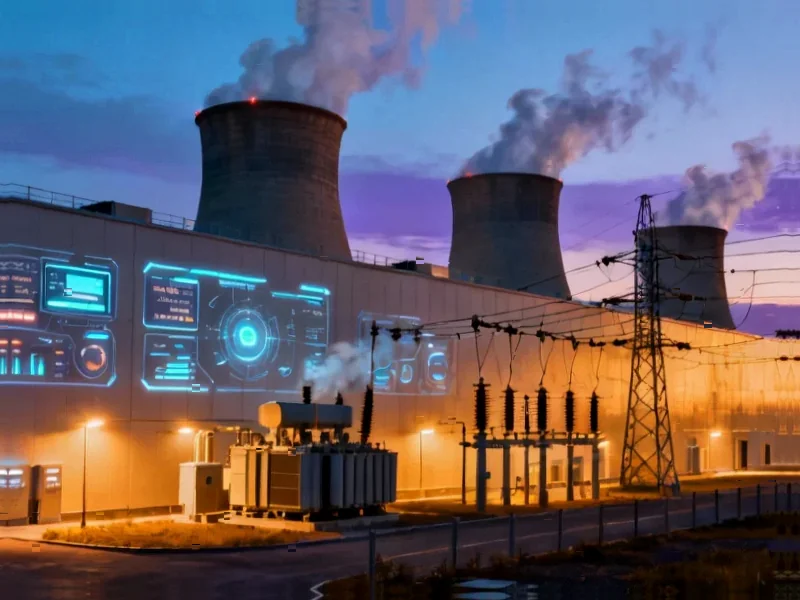According to TechRepublic, Microsoft has signed a $9.7 billion deal with Sydney-based data center provider IREN to secure AI cloud capacity for the next five years. The agreement gives Microsoft access to accelerator systems built on Nvidia’s GB300 architecture, with IREN committing to purchase $5.8 billion worth of GPUs and related equipment. Microsoft becomes IREN’s largest customer, expecting $1.94 billion in annualized revenue over the contract term, and has already provided a 20 percent prepayment according to IREN CEO Daniel Roberts. This follows Microsoft’s similar $19.4 billion deal with Nebius in September for AI infrastructure from a New Jersey data center. This massive investment reveals critical shifts in the AI infrastructure landscape that demand deeper analysis.
The AI Infrastructure Supply Crisis
Microsoft’s willingness to commit nearly $30 billion across just two data center deals signals a severe infrastructure shortage that even the largest cloud providers cannot solve internally. The fundamental constraint isn’t just capital—it’s time, location, and operational expertise. Building new data centers faces community resistance to water consumption and power grid limitations that can delay projects by years. Meanwhile, AI demand is exploding immediately, creating a window where existing operators with ready capacity become extraordinarily valuable. This explains why Microsoft is paying premium prices for access rather than building everything themselves—they’re buying time in a market where being first with scale can determine long-term competitive positioning.
The Crypto Miner Renaissance
The IREN deal highlights a fascinating industry transformation where former cryptocurrency miners are becoming essential AI infrastructure partners. Companies like IREN, CoreWeave, and HIVE possessed exactly the right expertise for this moment: experience managing large-scale GPU operations, established relationships with Nvidia, and existing data center footprints. Their transition from crypto mining to AI compute services represents one of the most successful pivots in recent tech history. The underlying hardware requirements for both applications—high-performance GPUs running 24/7—are remarkably similar, allowing these companies to repurpose their operational knowledge while upgrading their hardware stacks. This creates a new class of infrastructure specialists who understand GPU optimization at scale, something even major cloud providers are still learning.
Who Benefits From This Gold Rush
The immediate winners in this infrastructure scramble are clear: Nvidia continues its dominance as the essential hardware provider, while specialized data center operators command premium pricing for their scarce capacity. However, the ripple effects extend much further. Enterprise customers may face higher cloud costs as providers pass along these infrastructure investments, while startups could struggle to compete for compute resources against deep-pocketed giants. Geographically, regions with established data center infrastructure and favorable power costs—like certain parts of Australia where IREN operates—become strategic assets. The biggest losers might be traditional enterprise applications that don’t generate AI-level margins, potentially facing resource allocation challenges as providers prioritize high-value AI workloads.
The Sustainability Question
As these massive AI data center deals proliferate, energy consumption and environmental impact become increasingly pressing concerns. The energy demands of AI compute are staggering, with some estimates suggesting AI could consume as much electricity as entire countries within years. While companies like Microsoft have made carbon-neutral commitments, the practical reality of powering thousands of high-performance GPUs 24/7 creates significant environmental challenges. This infrastructure expansion occurs alongside growing regulatory pressure and consumer awareness about tech’s environmental footprint, creating potential future conflicts between AI growth ambitions and sustainability goals.
The Multi-Billion Dollar Gamble
While current AI demand appears insatiable, there’s substantial risk in these long-term infrastructure commitments. The AI market remains relatively nascent, and today’s most popular models and applications might be obsolete in five years when these contracts mature. If AI revenue growth plateaus or shifts toward more efficient architectures, providers could be left with expensive, specialized capacity they cannot fully utilize. The stock market’s recent volatility around AI stocks suggests investors are already questioning whether current valuations reflect realistic growth scenarios. Microsoft’s bet assumes sustained exponential growth in AI compute demand—a reasonable assumption today, but one that carries significant execution risk given the pace of technological change.
Redrawing Cloud Competition Lines
This deal fundamentally alters cloud competition dynamics. Rather than a pure hyperscale battle between Azure, AWS, and Google Cloud, we’re seeing the emergence of a layered ecosystem where specialized infrastructure providers feed capacity to the major platforms. This creates both opportunities and threats for Microsoft—they secure needed capacity but become dependent on third parties for their AI ambitions. For smaller cloud providers and enterprises, the concentration of AI compute among a few players could create access challenges and pricing power concerns. The OpenAI partnership gives Microsoft additional leverage, but also creates complex dependencies across multiple partners in their AI supply chain.




